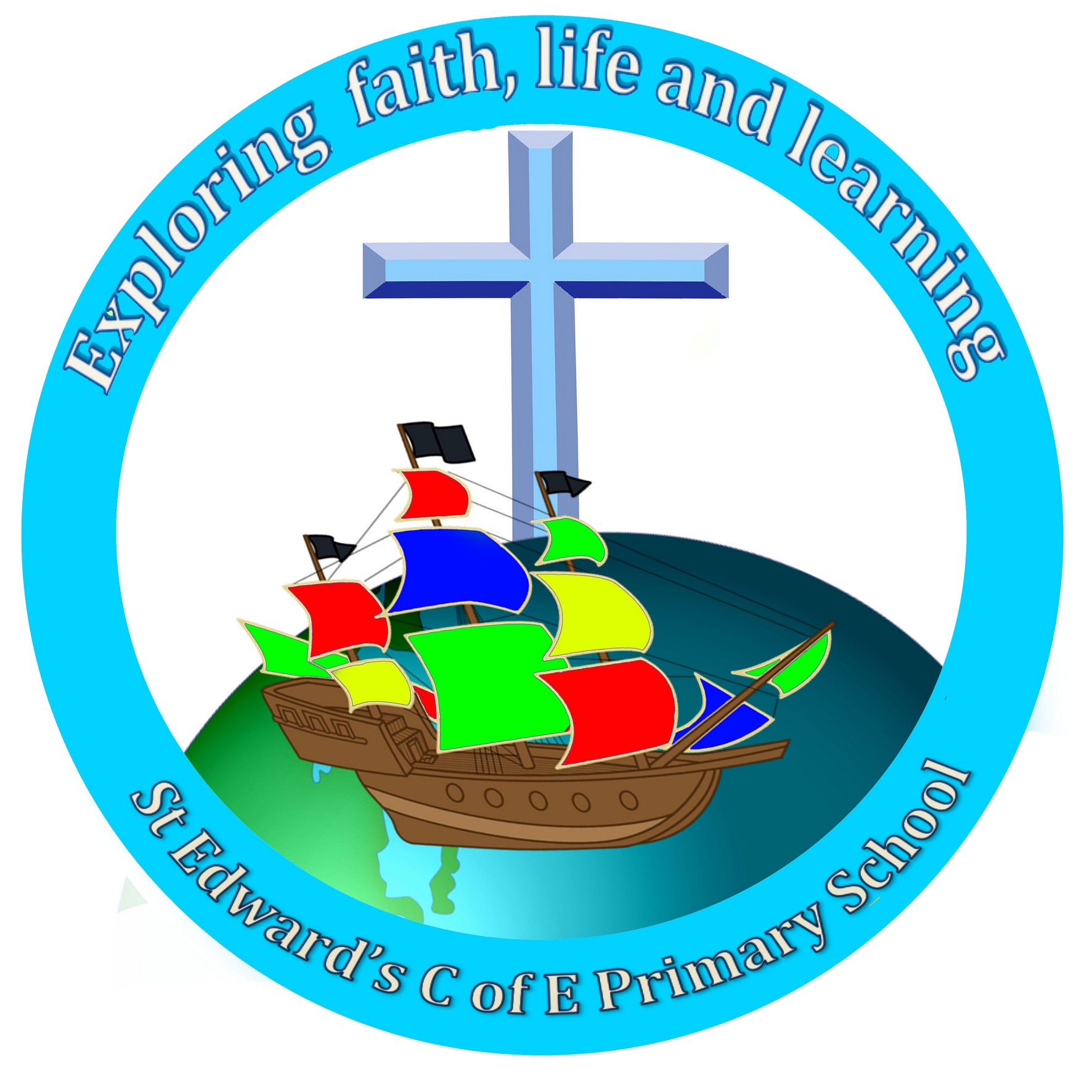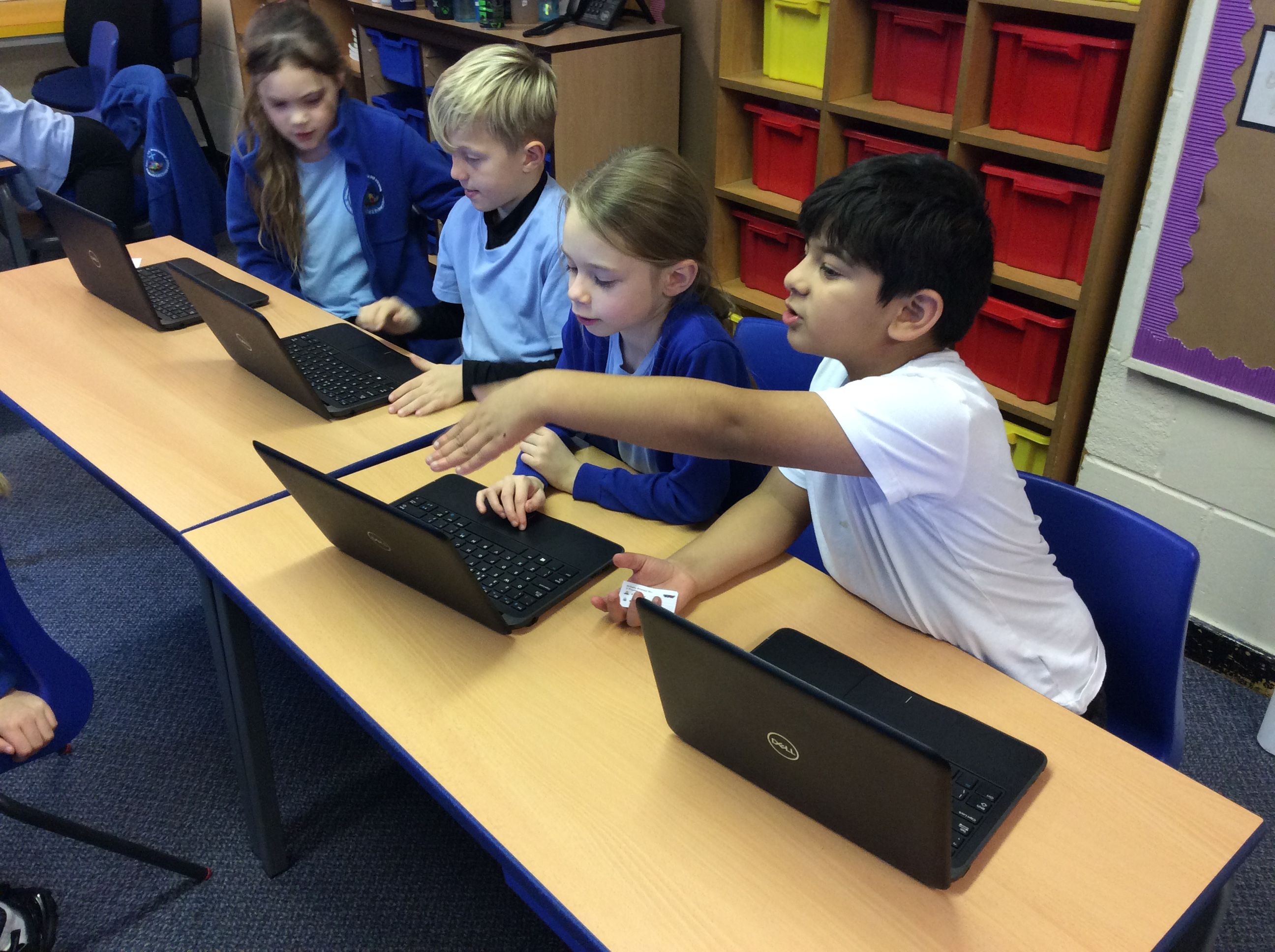Computing
St Edward's - A caring Christian Community where children achieve their potential, are confident in themselves and their abilities and are set on a positive path for life.
Computing is a subject that will equip pupils to use computational thinking and creativity to understand and change the world. Computing has deep links with mathematics, science and design and technology and provides insights into both natural and artificial systems.
Our whole curriculum is shaped by our school vision which aims to enable all children, regardless of background, ability, additional needs, to flourish to become the very best version of themselves they can possibly be.
We teach the National Curriculum, with the Teach Computing Scheme used as the vehicle to deliver it.
There is a clear skills and knowledge progression. This ensures that skills and knowledge are built on year by year and sequenced appropriately to maximise learning for all children. To ensure a broad range of skills and understanding, Computing is taught across three main strands: digital literacy, computer science and information technology.
As part of information technology, children learn to use and express themselves and develop their ideas through ICT for example writing and presenting as well as exploring art and design using multimedia.
Within digital literacy, children develop practical skills in the safe use of ICT and the ability to apply these skills to solving relevant, worthwhile problems including understanding safe use of the internet, networks and email. In computer science, we teach children to understand and apply the fundamental principles and concepts of computer science, including abstraction, logic, algorithms and data representation. They are also taught to analyse problems to computational terms, and have repeated practical experience of writing computer programs in order to solve problems.
At St Edward’s, we provide cross-curricular opportunities for children to apply their Computing knowledge and skills. Online safety is taught through the computing curriculum, HRE curriculum and assemblies. This ensures that all key aspects from Education for a Connected World are covered.
A Curriculum for Our Children
We have identified some core barriers that some of the children in our school face when they are accessing the curriculum, and we intend to deliver the Computing Curriculum with an approach that addresses these:
- Vocabulary – We use a range of technical vocabulary during computing lessons and encourage the use of language during discussions.
- Communication and teamwork skills – Children are encouraged to discuss their work with their peers and work together to solve problems involving computational thinking.
- Resilience – we design challenging tasks in our computing curriculum, allowing children to experience failure and errors in a safe environment, scaffolded by the implementation of growth mindset training.
- Life experiences – We aim to equip all children with the vital skills and knowledge of computing and ensure every child has the chance to use a range of technology that they may not have access to at home. We ensure that computing activities are linked to everyday life so that children are suitably prepared for the modern technological world they are growing up in.
A Curriculum for All Children
Ambition
Our ambition for pupils with SEND is broadly in line with our ambition for all pupils in the computing curriculum. Computing forms part of the school curriculum policy, to provide a broad and balanced education to all children.
Access (How we may support children with SEND to access the Computing curriculum)
- The computing curriculum is designed so that skills and knowledge are revisited and built upon in each lesson.
- Teachers and teaching assistants will 'check-in' with pupils who have SEND if necessary in each lesson and teaching is adaptive - responding to the needs of individual children.
- The use of visual aids may be in place to suit the needs of some learners.
EYFS
It is important in the Foundation stage to give children a broad, play-based experience of IT and computing in a range of contexts, including off-computer activities and outdoor play. We relate the computing aspects of the children's work to the objectives set out in the Early Learning Goals (ELGs), which underpin the curriculum planning for children aged birth to five. The most relevant statements for computing are taken from the following areas of learning:
• Personal, Social and Emotional Development
• Physical Development
• Understanding the World
• Expressive Arts and Design
Personal, Social and Emotional Development:
• Show resilience and perseverance in the face of a challenge.
• Know and talk about the different factors that support their overall health and wellbeing: -sensible amounts of ‘screen time’
Physical Development:
• Develop their small motor skills so that they can use a range of tools competently, safely and confidently.
Expressive Arts and Design:
• Explore, use and refine a variety of artistic effects to express their ideas and feelings.
Early Learning Goals
Personal, Social and Emotional Development/ Managing Self:
• Be confident to try new activities and show independence, resilience and perseverance in the face of challenge.
• Explain the reasons for rules, know right from wrong and try to behave accordingly
Expressive Arts and Design/ Creating with materials
• Safely use and explore a variety of materials, tools and techniques, experimenting with colour, design, texture, form and function.
Children in Reception have the opportunity to use the IWB, IPADs and Bee Bot. Then, during the year, they gain confidence and start using laptops, using a variety of software, to communicate in a variety of ways.
Computing is not just about computers. Our Early years learning environment features IT scenarios based on experience in the real world, such as within the role-play environment. Children gain confidence, control and language skills through opportunities such as ‘programming’ each other using directional language to find toys/objects, creating artwork using digital drawing tools and controlling programmable toys.
Outdoor exploration is an important aspect and using digital recording devices such as IPADs, can support children in developing communication skills.
Assessment in Computing
Teachers will assess children's work in Computing by making informal judgements during lessons. On completion of a piece of work, the teacher assesses the work, and uses this assessment to plan for future learning.
The use of Unit statements to record judgements allows the class teacher to identify any gaps within the learning, by highlighting specific outcomes for each child from the curriculum. Teachers then plan and deliver lessons to ensure all children progress and meet each outcome. Verbal feedback is given to the child to help guide his/her progress.
Older children are encouraged to make judgements about how they can improve their own work. Samples of the children's work are kept in their individual file on the ‘W Drive’.
This demonstrates the expected level of achievement in Computing for each age group in the school.

